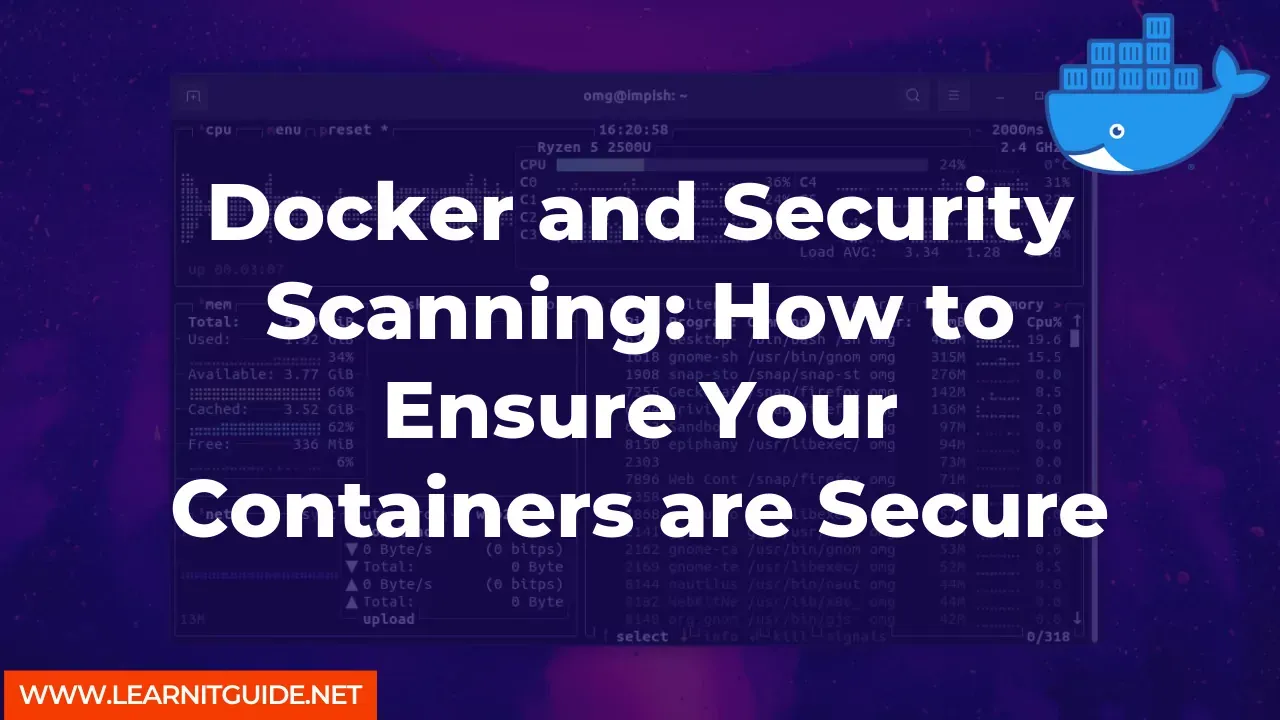In recent years, Docker has become an incredibly popular technology for containerization. Docker provides a way to package and deploy applications in a lightweight and portable way, making it easier for developers to deploy and manage their applications. However, as with any technology, security is a concern. In this article, we'll take a look at how you can ensure your Docker containers are secure by using security scanning.
Introduction
Docker provides a way to package and deploy applications in containers. A container is a lightweight and portable environment that includes everything needed to run an application. Docker containers are isolated from the host system and other containers, making them more secure. However, security is still a concern, especially when it comes to the contents of the container. This is where security scanning comes in.
Security scanning is a process that checks the contents of a Docker image for known vulnerabilities and security issues. By running a security scan on your Docker images, you can identify potential security risks and take steps to mitigate them.
Table of Contents
Why is Security Scanning Important?
How to Scan Docker Images for Security Issues
Best Practices for Using Security Scanning in Docker
Why is Security Scanning Important?
Security scanning is important because it helps identify potential security risks in your Docker containers. Docker containers are built from images, and these images can contain vulnerabilities and security issues. By scanning these images, you can identify these issues before they become a problem.
Security scanning can also help you comply with security regulations and standards. Many organizations are required to comply with security regulations such as HIPAA or PCI DSS. By scanning your Docker images, you can ensure that you are meeting these standards.
How to Scan Docker Images for Security Issues
To scan Docker images for security issues, you can use a tool such as Docker Security Scanning. Docker Security Scanning is a service that scans Docker images for vulnerabilities and security issues. It uses a database of known vulnerabilities to identify potential security risks.
To use Docker Security Scanning, you will need a Docker Hub account. If you don't already have an account, you can sign up for one at hub.docker.com.
Once you have a Docker Hub account, you can enable Docker Security Scanning for your Docker images. To do this, follow these steps:
- Log in to Docker Hub at hub.docker.com
- Click on the Repositories tab
- Click on the repository that contains the Docker image you want to scan
- Click on the Settings tab
- Scroll down to the Security Scanning section
- Click on the Enable button
Docker Security Scanning will now scan your Docker images for security issues. You can view the results of the scan by clicking on the Vulnerability Details link.
Best Practices for Using Security Scanning in Docker
Here are some best practices for using security scanning in Docker:
Use a tool like Docker Security Scanning to scan your Docker images for security issues.
Make sure to scan all of your Docker images regularly, especially before deploying them to production.
Keep your Docker images up to date by regularly updating the base images and packages used in your Dockerfiles.
Use multi-stage builds to reduce the attack surface of your Docker images.
Use Docker Content Trust to ensure the integrity of your Docker images.
Docker provides a powerful and flexible way to package and deploy applications. However, security is a concern, especially when it comes to the contents of the Docker containers. By using security scanning, you can identify potential security risks and take steps to mitigate them. Follow the best practices outlined in this article to ensure that your Docker containers are secure.
Related Searches and Questions asked:
That's it for this post. Keep practicing and have fun. Leave your comments if any.








0 تعليقات